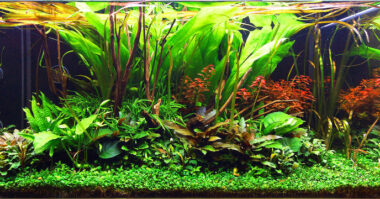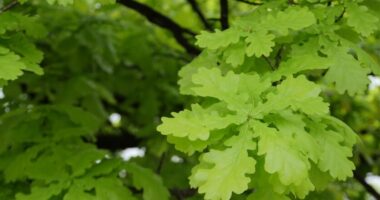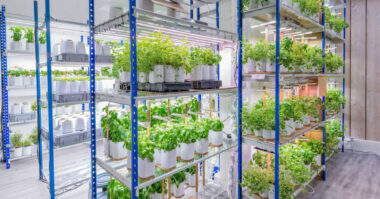The benefits of trees for life on Earth are multiple and well known. Planting them has become a popular activity for companies. Trees are an undeniable source of life on earth. But they also have the power to store CO2. And therefore limit global warming.
The massive planting of trees would not only reduce CO2 emissions into the atmosphere, but also generate a positive impact on the climate.
Contents
Why Planting Trees Could Help the Environment
Trees can produce food
Trees that are planted to store CO2 can do more: they produce food. In addition, by preventing erosion they create more land suitable for growing food. In most hot countries people plant food in the shade of trees because the sun on treeless land would dry out the soil too quickly and burn crops.
Trees can stimulate economic growth
It will stimulate the economic development of poor countries suffering from erosion, desertification and lack of food. Trees create their own added value: land that can generate money becomes more valuable and can therefore be used as collateral for loans. Trees give small farmers access to the financial market and encourage them to invest in their businesses. In this way trees recapitalize land that has no value as valuable land.
Therefore they make possible micro credit and, in the long run, larger credits because the land where they grow becomes a good collateral. The investment keeps its value, even when the oil reserves are exhausted.
Happy people do not move and they commit few crimes if they live in small communities with good social relations. Trees can create these economically sound circumstances and can also replace fences and prisons. In fact global tree planting is the answer to poverty.
Maintaining biodiversity and a healthy environment
If we plant two billion hectares of forest in 40 years and neutralize the 15 million hectares that are cut down every year, we provide the space for ecosystems. Scientists warn us that nowadays every hour between two and five species become extinct. We can delay and maybe even stop this with the ‘Treesolution’.
Everyone knows that during a hot summer it is always nice and cool in the woods. This is because trees take the heat (energy) from the air and use it for photosynthesis. This lowers the air temperature.
At night the trees radiate heat backwards into space by infrared waves. This causes water vapour in the air to condense on the dewy leaves, which also helps the tree to develop even better, even in a dry climate.
Trees and their surface area can grow. If the population grows by 50% in the 21st century, the tree area will increase with it or even faster in case we plant more. Therefore, it is a flexible solution.
Can we save the planet by planting trees?
Planting trees can be a good thing, especially in countries where predatory logging and other land abuses have destroyed soil stability and deprived local people of shade, drinking water, fish and fruit.
But such initiatives are the exception. In reality, mass plantations are likely to do more harm than good. And it is almost impossible to distinguish between good and bad projects.
The other, more important problem is the ecological disaster that tree planting can cause if it is not done carefully. Few projects disclose the species planted. Even fewer commit to planting only native species. And when they do, they are inclined to plant monocultures, which have virtually no value to wildlife and are vulnerable to disease, insects and wind.
Forests are complex machines with millions of cogs driving each other. You can’t plant a forest; you can only plant a plantation.
Trees planted in the wrong places, especially where they are naturally scarce, destroy native ecosystems.
Grasslands, for example, are important habitat for a wide range of wildlife species. But since European colonization, the American population has destroyed them by planting trees.
How to plant trees properly
When reforestation projects are poorly thought out or prepared, they can cause more harm than good – not to mention the money and time lost. For example, the reforestation of deforested areas can encourage the displacement of areas of agricultural activity to virgin landscapes and thus accelerate the clearing of primary forests. However, the ecological richness of the latter can never be fully restored.
In fact, in order to preserve forests and their biodiversity, it would be advisable above all to plan measures to regulate clearing. This is something that the G7 leaders dodged in 2019, preferring to put forward the reforestation map. In short, half a renunciation.
Moreover, as indicated above, tree planting is very often seen as a means of limiting climate change through the capture of carbon dioxide (CO2). Indeed, during their growth phase, trees fix carbon in their biomass while releasing oxygen. This is the well-known phenomenon of photosynthesis. Nevertheless, here again, things are more complex than one might think at first glance.
Why it’s not enough
The storage capacity of a tree depends on a large number of factors, such as species, climate, atmospheric CO2 level and the general ecosystem. A 2017 study thus suggests that the absorption capacity of subtropical or tropical forests would have been largely overestimated because the soil on which they grow is too poor in nutrients.
In addition, artificially planted forests are much less efficient than natural forests in storing CO2. In 2016, a previous study showed that replacing natural forests with managed forests in Europe resulted in a 10% reduction in carbon storage.
While CO2 emissions from our activities are on the rise again, the scientific community is sounding the alarm: reducing CO2 emissions from our activities will not be enough to stop global warming. We will also need to massively remove CO2 from the atmosphere.
Exploiting the storage capacities of trees is today the only truly economical and efficient solution to capture and store CO2 from the atmosphere. A means accessible to every company, city or individual.
Summary
Planting trees is fashionable. For the past few years, it’s an idea or a gadget that can be found almost everywhere, in the declarations of political figures, mayors, in the intentions of certain companies and even within the most polluting sectors, such as the aeronautics or fossil fuels sectors.
Trees are an invaluable resource that contributes in many ways to improving the quality of life in an urban environment. Indeed, a tree absorbs air pollutants, noise and rainwater, while reducing runoff into the sewers. In addition, trees are the best tool to fight the phenomenon of heat islands in urban areas because the shade they provide reduces the ambient temperature.
However, we will explain why it is not always the right solution; mass planting can even be counterproductive in some cases!








